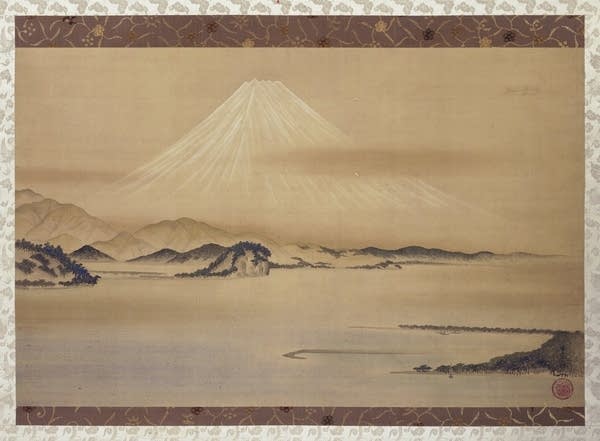'Transformative' gift of Japanese art comes to MIA
Go Deeper.
Create an account or log in to save stories.
Like this?
Thanks for liking this story! We have added it to a list of your favorite stories.

A California rancher is giving a collection of Japanese art worth $25 million to the Minneapolis Institute of Art. The collection of almost 1,700 objects represent a thousand years of Japanese history.
Rancher Bill Clark's gift of large art works also includes paintings, sculpture, woodblock prints, ceramics, bamboo baskets and textiles that represents a millennium of artistic endeavor and expands the MIA's already extensive collection of Asian artifacts, said Matthew Welch, who heads the museum's Asian art collection.
"It's a transformative gift for the Minneapolis Institute of Arts," he says. "I mean it's nearly 1,700 objects from one of the premier collections of Japanese Art in the United States."
• State of the Arts: View photos of some of the pieces
Turn Up Your Support
MPR News helps you turn down the noise and build shared understanding. Turn up your support for this public resource and keep trusted journalism accessible to all.
But Clark said he had always just collected pieces he liked, and hoped others might also enjoy it. He remembers the moment when his love affair with Japan began. It was while he attended a tiny elementary school with just 25 students in rural California.
"And in the 6th grade we had a geography book and it covered the major countries of the world, and there was something about Japan," Clark said. "And I tell you the picture that was on that page just made a big difference and I was interested in it very much."
Clark didn't get to act on that interest, at least in terms of collecting art, until he joined the Navy and was stationed in Japan.
"I am serious when I say when I first stepped off the plane, it was just like I was stepping on sacred soil," he said.
Clark bought some pieces then, but didn't become a major collector until he returned stateside and his artificial insemination business took off. He set up the Clark Center in California and began filling it with pieces.
"But particularly with great strengths in the Edo period that is from about 1600 to 1868," Welch said. "I think he has just taken great joy in collecting Japanese art, and I think it is reflected in many of the objects that are in the collection."
Welch is acknowledging what Clark freely admits: he likes things that make him laugh.
"I have a funky, bizarre taste and I like funny pictures and things like that. And so I think I buy for myself but I also buy for what I hope other people will really enjoy and smile at and things," Clark said. "Lastly, I would just tell you, my wife said to me 'Honey, I don't care what you buy, just please don't tell me what it cost.' So, that's the way we work."
For all the enjoyment Clark takes from the collection, his gift will become the basis of serious scholarship. The current director of the Clark Center in California will move to the MIA to become its head of the Japanese and Korean Department.
The public will get a chance to see selections from new acquisitions when the MIA mounts its first exhibition in October. Called "The Audacious Eye: Japanese Art from the Clark Collections," the show will focus on Clark's special brand of collecting.



